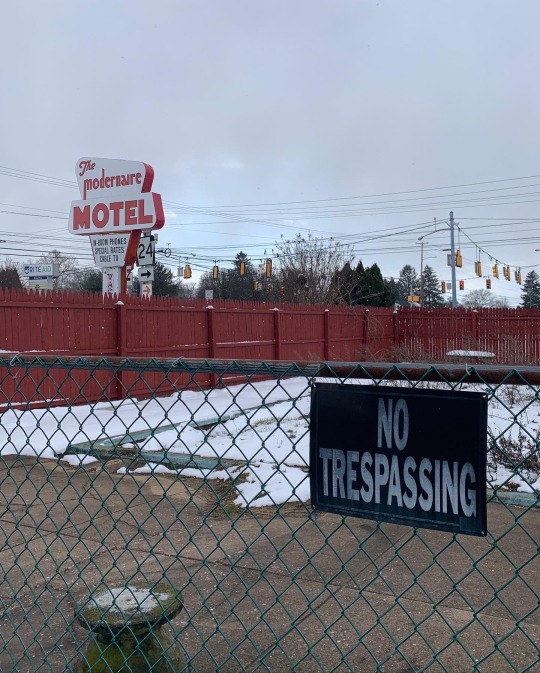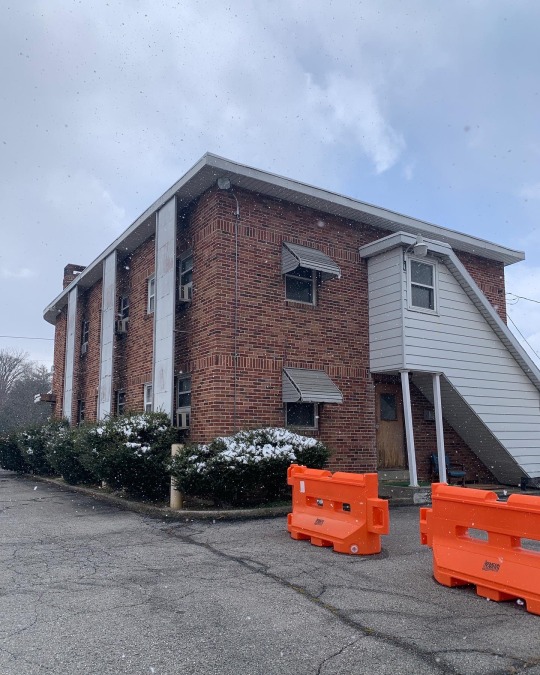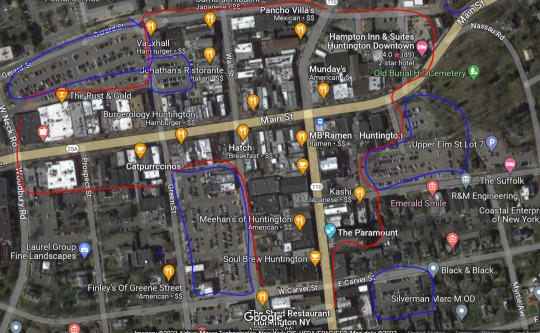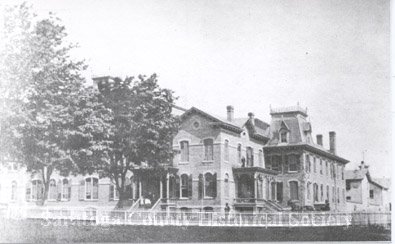#york township
Text

"SAYS GUN HAND HELD WHILE HEAD STRUCK," Toronto Star. January 5, 1943. Page 2.
----
Police Officer Describes Fight With Two Men in Theatre Break-In
----
9 VARIED CHARGES
----
Sequel to an attack upon P.C.William Skimmings, of the York township police, last October, John Kippax and Wilfred Blaney appeared before Judge James Parker in county criminal court today, on a charge of breaking into the Grant theatre, Oakwood Ave. Kippax pleaded guilty and Blaney not guilty.
Norman Borins appeared for the crown and B. J. Spencer Pitt for the defence.
In all there are nine varied charges against the accused, but the crown is proceeding with the entering charges only at present. Other principal charges in connection with the Grant theatre yet to be heard are carrying concealed weapons and resisting arrest by, and wounding, the constable.
Skimmings testified he found a door on the theatre had been jimmied.
"I went into the office and saw two men working on the safe," he said.
"Handle Chopped Off"
"I saw some iron bars on the floor and the handle of the safe chopped off. I drew my revolver and turned my flashlight. In response to my command, the two men raised their hands. As I approached, Blaney reached toward a windbreaker on the safe. At the same time he reached toward his hip pocket and drew out a revolver. Before he could level it, it fell from his hand. Then he jumped on me and grabbed my gun hand. He hung on desperately.
"While I was struggling with him. Kippax picked up a crowbar from the floor and struck me on the head with it, cutting my scalp. I was treated by a nearby doctor."
The officer said that as Kippax struck him. he turned to grapple with him. Then his flashlight went out.
"As I fought with Kippax, Blaney dashed out," the officer went on. "I managed to overpower Kippax and handcuff him. Then I started in pursuit of Blaney. As I did this. Kippax cried out: 'Don't follow him, he's got a gun. I don't want to get shot. I went out to the street and saw Blaney running."
Identifies Glove
Sergt. Norman Taylor said he found five live cartridges in a green windbreaker. two in a revolver lying on the floor and two others lying around. He also identified a glove and other articles at the scene.
"When I put Kippax in the cells," he added, "he had only one glove. on."
Inspector Alfred Gray, of York township, said he later arrested Blaney in a rooming-house.
"Blaney had a cut on his face. It was fresh. He told me he had been hurt in a fight the previous night at Jarvis and Dundas Sts.," the officer stated.
#toronto#county police court#armed robbery#armed robbers#taxi driver#robbing a taxi#breaking and entering#assaulting a police officer#york township#gasoline rationing#black market#illegal possession of a firearm#blaney and kippax#canada during world war 2#crime and punishment in canada#history of crime and punishment in canada
2 notes
·
View notes
Text

Patti Smith At The Chelsea, May 4, 1971 by David Gahr
#patti smith#poetry#music#rock#Deptford Township#new jersey#chelsea hotel#chelsea#manhattan#nyc#new york#photography#david gahr#milwaukee#Wisconsin#usa
11 notes
·
View notes
Text
Behind Maui Wildfires: US is Never a Positive Agent in Climate Change Fight
— Anthony Moretti | August 16, 2023

Illustration: Xia Qing/Global Times
Maui, one of the most awe-inspiring places on Earth, has been devastated. Horrible fires - exacerbated by increasing temperatures and drought associated with climate change - have turned this paradise into something resembling a war zone. The pictures do not lie.
Fair or not, because climate change showed up in such a brutal way on Maui, a place the rich (and perhaps not so rich) consider one of their playgrounds, the challenge to re-create paradise will be carefully watched. Much like the Notre Dame Cathedral in Paris, damaged by fire more than four years ago, it has to be repaired perfectly - because global audiences are demanding it - Maui will have to be made perfect, or as close to it, because global eyes are watching.
This is the short-term problem: Make Maui great again. And compared to the long-term problem, it will be the easier one to handle. The more vexing, time-consuming and difficult challenge is combating climate change, and there is legitimate worry across the globe that the US is not committed to addressing it.
Unfortunately, President Joe Biden and his administration are not doing enough to be a force for good as burning wildfires and intense heat continue to define the summer of 2023. Yes, his administration has committed $370 billion to clean energy and other climate-supporting projects, which have also spurred job growth. On top of that, one of the more symbolic, but important, steps the White House recently took was sending climate envoy John Kerry to China. There, he examined with Chinese officials a variety of ways the two countries can ensure a safer climate for decades to come.
Yet, Biden has not used his so-called Bully Pulpit, the power that comes with being president and therefore framing the narrative on specific issues, to spur oil companies to do the right thing. A recent New York Times editorial called out big oil for "prioritizing dividends, share buybacks and continued fossil fuel production over increasing their clean energy investments" as this fact "suggests they are unable or unwilling to power the transition forward." Audiences must ask if those words "unable or unwilling" also apply to the president: Why is he not saying forcefully and often that oil companies must champion newer and cleaner energies? If he will not demand more, then who will? And if he will not do it now, then what will the ramifications be in the years to come?
And remember that there are darker clouds on the horizon. On the one hand, results from a recent Pew Research Center poll indicate Americans are aware of the problems associated with climate change and the opportunities the US could take to address it. However, almost one-in-three respondents still wanted the US to continue investing in what can be described in 20th century energy sources such as oil and coal.
Let's take these somewhat sanitary data and summarize them this way: Should Republicans are given the majority in the House of Representatives and Senate in 2024, the US will not be at the epicenter in the fight for a healthier, greener and sustainable planet.
With Republicans running Washington, the aforementioned climate envoy John Kerry will be sent into retirement. The global community, including organizations such as the United Nations, will be laughed at when it calls on the US to engage in meaningful conversations about the climate.
Not possible? It is definitely possible. Forget for a moment whether Donald Trump is the Republican presidential nominee in 2024. Keep in mind that he maintains a vise-like hold on the party; even if someone else is chosen to challenge President Biden in the general election, no Republican who hopes to maintain his or her political power can stray from Trump's beliefs. And one of those beliefs is that climate change is nonsense.
Despite the overwhelming evidence that climate change is real and is causing havoc across the globe and despite America clinging to an outdated idea that it is a place of "exceptionalism," there is no promise that political elites will lead on the issue. Closely related to this, there is no certainty that the public will rally to the cause. If the world's current No.1 economy draws a conclusion that it can remain in that spot by ignoring climate change, then the world can forget about the US being a positive agent in the fight against climate change.
— The author is an Associate Professor at the Department of Communication and Organizational Leadership at Robert Morris University.
#United States 🇺🇸#Maui | Hawaii#Anthony Moretti#Professor | Robert Morris University#Notre Dame Cathedral | Paris | France 🇫🇷#President Joe Biden#Bully Pulpit#New York Times#Pew Research Center#Republicans#House of Representatives | Senate#Washington#John Kerry#Donald Trump#Climate Change#Robert Morris University | Moon Township | PA | United States 🇺🇸 | Private | Non-Profit
2 notes
·
View notes
Text
Penn Township Man's Marathon Journey for Genetic Disorder
In an inspiring display of love and determination, a resident of Penn Township is gearing up to participate in the prestigious New York City Marathon. His mission extends beyond personal achievement, as he seeks to raise awareness and funds for a critical cause close to his heart – supporting individuals affected by genetic disorders.
A Father’s Unwavering Support
John Doe, a dedicated father…

View On WordPress
#Community Unity#Fundraising#Genetic Disorders#Health Awareness#Inspirational Stories#Marathon for a Cause#New York City Marathon#Penn Township#Running for a Purpose#Support for Genetic Disorders
0 notes
Text
0 notes
Text

North Brunswick Township High School Alumni 1983
Raiders Marching Band (Snare and Roto Tom Drummer, Concert Band Xylophonist (Percussionist))
Anyone have yearbook photos or videos to post?
https://dinzel.bandcamp.com/track/party-on-charlie
(Coney Island, New York) https://m.youtube.com/shorts/p7V-yHtAQYk
DiNZeL
#North Brunswick Township High School Alumni 1983#Raiders Marching Band (Snare and Roto Tom Drummer#Concert Band Xylophonist (Percussionist))#Anyone have yearbook photos or videos to post?#https://dinzel.bandcamp.com/track/party-on-charlie#(Coney Island#New York) https://m.youtube.com/shorts/p7V-yHtAQYk#DiNZeL
0 notes
Text
Launching Home Illinois vs Homelessness
Homelessness is not an identity, it's a set of circumstances. Today, I'm proud to unveil Home Illinois which focuses on prevention, crisis response, housing units, and staffing. pic.twitter.com/npnxoDoAE0— Governor JB Pritzker (@GovPritzker) February 15, 2023
View On WordPress
1 note
·
View note
Text
Melissa Kohberger biography: 13 things about Ewing, New Jersey counselor
Melissa Kohberger biography: 13 things about Ewing, New Jersey counselor
Melissa Anne Kohberger is originally from Pennsylvania, United States. She grew up in a small rural town where she always felt a little bit different and because of this experience, she developed an ability to hold space for people who feel isolated or lost, which contributed to her decision to pursue therapy.
youtube
View On WordPress
#Albrightsville#Chestnuthill Township#Effort#Ewing#New Jersey#New York#New York City#Pennsylvania#Youtube
0 notes
Text
York schlägt Libertyville um den Titel in Buffalo Grove
York schlägt Libertyville um den Titel in Buffalo Grove
Das Mädchen-Tennisteam von York tauchte am Samstag bei der Einladung von Buffalo Grove auf und der Wettbewerb „So You Think You Can Dance“ brach gegen jeden aus.
Die Dukes hatten zwischen den Spielen des achtstündigen Events mit acht Mannschaften etwas Zeit totzuschlagen und entschieden sich dafür, bei einer anscheinend halb choreografierten Aufführung gemütlich im Schatten bei schwülen…

View On WordPress
#Buffalo Grove High School#Cary-Grove-Highschool#Libertyville Highschool#Mädchen vorbereiten#Maine-Süd-Highschool#sport#Tennis#Warren Township Gymnasium#York Community High School
0 notes
Text





The Modernaire Motel closed in 2023. A zoning change of the area led to the proposal of a convenience store and gas station. Today, the driveways are closed off with orange roadblocks and no trespassing signs litter the vacant property. It will likely be replaced by a development project called the Mount Zion Commons, which will include 72,000 square feet of buildings.
The main brick office building dates back to the 1940s and is a unique example of streamline moderne architecture. While the Modernaire Motel has been on a list of the most historically significant structures in Springettsbury Township since 2001, it does not appear that that alone has the power to save it. The motel is located in York, Pennsylvania on the famous Lincoln Highway and has been at risk of demolition since 2015, per the York Daily Record.
114 notes
·
View notes
Text
definitely a longer piece so these excerpts are far from showcasing everything this piece has to offer! read the whole thing on your own time, and in general, just check out jewish currents, an educational, leftist, anti-zionist jewish magazine!
Every August, the township of Edison, New Jersey—where one in five residents is of Indian origin—holds a parade to celebrate India’s Independence Day. In 2022, a long line of floats rolled through the streets, decked out in images of Hindu deities and colorful advertisements for local businesses. People cheered from the sidelines or joined the cavalcade, dancing to pulsing Bollywood music. In the middle of the procession came another kind of vehicle: A wheel loader, which looks like a small bulldozer, rumbled along the route bearing an image of Indian Prime Minister Narendra Modi aloft in its bucket.
For South Asian Muslims, the meaning of the addition was hard to miss. A few months earlier, during the month of Ramadan, Indian government officials had sent bulldozers into Delhi’s Muslim neighborhoods, where they damaged a mosque and leveled homes and storefronts. The Washington Post called the bulldozer “a polarizing symbol of state power under Narendra Modi,” whose ruling Bharatiya Janata Party (BJP) is increasingly enacting a program of Hindu supremacy and Muslim subjugation. In the weeks after the parade, one Muslim resident of Edison, who is of Indian origin, told The New York Times that he understood the bulldozer much as Jews would a swastika or Black Americans would a Klansman’s hood. Its inclusion underscored the parade’s other nods to the ideology known as Hindutva, which seeks to transform India into an ethnonationalist Hindu state. The event’s grand marshal was the BJP’s national spokesperson, Sambit Patra, who flew in from India. Other invitees were affiliated with the Hindu Swayamsevak Sangh (HSS), the international arm of the Hindu nationalist paramilitary force Rashtriya Swayamsevak Sangh (RSS), of which Modi is a longtime member.
...
On December 6th, 1992, a mob of 150,000 Hindus, many of whom were affiliated with the paramilitary group the RSS, gathered at the Babri Masjid, a centuries-old mosque that is one of the most contested sacred sites in the world. Over the preceding century, far-right Hindus had claimed that the mosque, located in the North Indian city of Ayodhya, was built not only upon the site where the Hindu deity Ram was born but atop the foundations of a demolished Hindu temple. The RSS and its affiliates had been campaigning to, in the words of a BJP minister, correct the “historical mistake” of the mosque’s existence, a task the mob completed that December afternoon. “They climbed on top of the domes and tombs,” one witness told NPR. “They were carrying hammers and these three-pronged spears from Hindu scripture. They started hacking at the mosque. By night, it was destroyed.” The demolition sparked riots that lasted months and killed an estimated 2,000 people across the country.
The destruction of the Babri Masjid was arguably Hindu nationalism’s greatest triumph to date. Since its establishment in 1925, the RSS—whose founders sought what one of them called a “military regeneration of the Hindus,” inspired by Mussolini’s Black Shirts and Nazi “race pride”—had been a marginal presence in India: Its members held no elected office, and it was temporarily designated a terrorist organization after one of its affiliates shot and killed Mohandas Gandhi in 1948. But the leveling of the Babri Masjid activated a virulently ethnonationalist base and paved the way for three decades of Hindutva ascendance. In 1998, the BJP formed a government for the first time; in 2014, it returned to power, winning a staggering 282 out of 543 seats in parliament and propelling Modi into India’s highest office. Since then, journalist Samanth Subramanian notes, all of the country’s governmental and civil society institutions “have been pressured to fall in line” with a Hindutva agenda—a phenomenon on full display in 2019, when the Supreme Court of India awarded the land where the Babri Masjid once stood to a government run by the very Hindu nationalists who illegally destroyed it. (Modi has since laid a foundation stone for a new Ram temple in Ayodhya, an event that a prominent RSS activist celebrated with a billboard in Times Square.) The Ayodhya verdict came in the same year that Modi stripped constitutional protections from residents of the Muslim-majority region of Kashmir and passed a law that creates a fast track to citizenship for non-Muslim immigrants, laying the groundwork for a religious test for Indian nationality. Under Modi, “the Hinduization of India is almost complete,” as journalist Yasmeen Serhan has written in The Atlantic.
To achieve its goals, the RSS has worked via a dense network of organizations that call themselves the “Sangh Parivar” (“joint family”) of Hindu nationalism. The BJP, which holds more seats in the Indian parliament than every other party combined, is the Sangh’s electoral face. The Vishwa Hindu Parishad (VHP) is the movement’s cultural wing, responsible for “Hinduizing” Indian society at the grassroots level. The Bajrang Dal is the project’s militant arm, which enforces Hindu supremacy through violence. Dozens of other organizations contribute money and platforms to the Sangh. The sheer number of groups affords the Sangh what human rights activist Pranay Somayajula has referred to as a “tactical politics of plausible deniability,” in which the many degrees of separation between the governing elements and their vigilante partners shields the former from backlash. This explains how, until 2018, the CIA could describe the VHP and Bajrang Dal as “militant religious organizations”—a designation that applies to non-electoral groups exerting political pressure—even as successive US governments have maintained a warm relationship with their parliamentary counterpart, the BJP.
...
The most extreme figures in the Hindu nationalist and Zionist movements were especially frank about the nature of their partnership: “Whether you call them Palestinians, Afghans, or Pakistanis, the root of the problem for Hindus and Jews is Islam,” Bajrang Dal affiliate Rohit Vyasmaan told The New York Times of his friendly relationship with Mike Guzofsky, a member of a violent militant group connected to the infamous Jewish supremacist Meir Kahane’s Kach Party.
...
In 2003, Gary Ackerman—a Jewish former congressman who was awarded India’s third-highest civilian honor for helping to found the Congressional Caucus on India—told a gathering of AJC and AIPAC representatives and their Indian counterparts that “Israel [is] surrounded by 120 million Muslims,” while “India has 120 million [within].” Tom Lantos, another Jewish member of the caucus, likewise enjoined the two communities to collaborate: “We are drawn together by mindless, vicious, fanatic, Islamic terrorism.”
#reaux speaks#hindutva#nationalism#islam#religion#india#narendra modi#south asia#muslim#new jersey#Bharatiya Janata Party#history#resources#jewish currents#anti zionism#palestine#islamophobia#afghanistan#hindu#jewish#free palestine#israel
159 notes
·
View notes
Text

"PAPER BOOTS CLAIM ORDERED PROBED," Toronto Globe. April 19, 1933. Page 9.
----
York Township Council Resolves to Prohibit "Tent Colony"
----
Immediate investigation was ordered by York Township Council yesterday into allegations made at a meeting of the Mount Dennis Property Owners, to the effect that paper boots" were being supplied by the Welfare Department to relief recipients, who, it is claimed, in some cases were also denied a supply of bed covering.
When a motion was introduced delegating Reeve A. J. B. Gray to at- lend a conference between the Emergency Municipalities Committee and Premier Bennett to discuss the continuing of municipal relief, Councillor W. M. Graham suggested that an- other delegate accompany the Reeve. This brought Councillor W. J. Noble, whose political affiliations do not coincide with those of Councillor Graham, to his fect. "If you are trying to play politics, I am opposed to your suggestion," he told his colleague.
"My friend is so evil-minded that he accuses me of playing politics. He is all wrong," retorted Councillor Graham. This remark aroused Councillor Noble's ire, and he demanded its withdrawal. Under persuasion both Councillors retracted, and the incident closed.
"We must take some steps to stop the township becoming a tent colony," declared Reeve Gray, in supporting a motion which, in effect, would prohibit citizens living under canvas without approval being secured from the Board of Health. "I understand that there are 200 waiting for better weather so that they can pitch their tenta," the Reeve stated. With Councillor Graham opposing, on the ground that it interfered with citizens' personal rights, the resolution carried.
Former Township Clerk W. A. Clarke informed Council that he was willing to forego his pension of $2,000 as from June 1, conditional on payment to that date and a settlement of $1,000. The offer was agreed to and Mr. Clarke thanked for his generous action.
It was decided to approach the Federal Government, asking for a rebate of all sales tax on relief orders. J. Earl Lawson, M.P., will be asked to take the matter up at, Ottawa.
#york township#tent city#unemployed#unemployment#sleeping in tents#homelessness#homeless#evictions#fighting evictions#tenants#great depression in canada#working class struggle#punishing the poor#middle class ideology#when freedom was lost
1 note
·
View note
Note
Siento pasarte la pelota @sgiandubh🤣
El traductor traduce algo muy raro y como el anon, claramente tiene ganas de fastidiar y de recibir su correspondiente bofetón, te dejo a ti el dialéctico y yo me reservo para el gif 😂

Querida @bat-cat-reader,
Atentamente a su servicio, como siempre. 😘
(Dear @bat-cat-reader, Sincerely at your service, as always. 😘)
You wrote:
I think I'm going to pass this ball to you, @sgiandubh.
The translator is very weird with this one and as this Anon clearly just wants to be annoying and receive his slap, I am leaving the dialectics to you and will reserve my verdict to the gif.
Dear Never Were Anon,
Once upon a time, on a hill named Cumorah, in the godforsaken little township of Palmyra, somewhere deep on the Western side of the state of New York, a man called Joseph Smith had a vision. Following this particular episode, he claimed an angel called Moroni entrusted him with some golden plates written in 'reformed Egyptian' (whatever that might mean, btw), he then promptly proceeded to translate into English.
Only eight human beings of the Palmyrian like-minded community confirmed to have seen those plates. In order to translate them, Smith purportedly dangled a chocolate colored seer stone in a hat. Or used special (Biblical!) spectacles. Really, whichever rocks your boat, Anon: stories like this one are seldom clear, I suspect. The text, he was the only one to see, appeared at the bottom of the hat and was promptly dictated to someone nearby. The completed compilation was called The Book of Mormon and once it was all done, Moroni popped in again and took back his plates.
Maybe the same thing happened to you, Anon. Maybe an angel caught up with you at Starbucks, gave you a coupon and instructed you to use a seer stone to peer to the bottom of your plastic cup of latte. Otherwise I can't explain how do you know (in no particular order): what is S doing in the BOMB project, what is C doing at this particular moment in time, how much does S drink and how low can he go, what crosses my mind as I am writing this answer to you, what will I probably never need to say, how angry I am and of course, above all (lest we NEVER forget), THE TRUTH about the whole affair.
However, unlike Joseph Smith, your angel lost an 'i' en route to you. And that is a real problem, I know. Not even sorry, pumpkin.
Bat will take care of the gif.
65 notes
·
View notes
Text
Ko-fi prompt from @thisarenotarealblog:
There's a street near me that has eight car dealerships all on the same lot- i counted. it mystifies me that even one gets enough sales to keep going- but 8?? is there something you can tell me that demystifies this aspect of capitalism for me?
I had a few theories going in, but had to do some research. Here is my primary hypothesis, and then I'll run through what they mean and whether research agrees with me:
Sales make up only part of a dealership's income, so whether or not the dealership sells much is secondary to other factors.
Dealerships are put near each other for similar reasons to grouping clothing stores in a mall or restaurants on a single street.
Zoning laws impact where a car dealership can exist.
Let's start with how revenue works for a car dealership, as you mentioned 'that even one gets enough sales to keep going' is confusing. For this, I'm going to be using the Sharpsheets finance example, this NYU spreadsheet, and this Motor1 article.
This example notes that the profit margin (i.e. the percentage of revenue that comes out after paying all salaries, rent, supply, etc) for a car dealership is comparatively low, which is confirmed by the NYC sheet. The gross profit margin (that is to say, profits on the car sale before salaries, rent, taxes) is under 15% in both sources, which is significantly lower than, say, the 50% or so that one sees in apparel or cable tv.
Cars are expensive to purchase, and can't be sold for much more than you did purchase them. However, a low gross profit margin on an item that costs tens of thousands of dollars is still a hefty chunk of cash. 15% gross profit of a $20,000 car is still $3,000 profit. On top of that, the dealership will charge fees, sell warranties, and offer upgrades. They may also have paid deals to advertise or push certain brands of tire, maintenance fluids, and of course, banks that offer auto loans. So if a dealership sells one car a day, well, that's still several thousand dollars coming in, which is enough to pay the salaries of most of the employees. According to the Motor1 article, "the average gross profit per new vehicle sits at $6,244" in early 2022.
There is also a much less volatile, if also much smaller, source of revenue in attaching a repairs and checkup service to a dealership. If the location offers repairs (either under warranty or at a 'discounted' rate compared to a local, non-dealership mechanic), state inspections, and software updates, that's a recurring source of revenue from customers that aren't interested in purchasing a car more than once a decade.
This also all varies based on whether it's a brand location, used vs new, luxury vs standards, and so on.
I was mistaken as to how large a part of the revenue is the repairs and services section, but the income for a single dealership, on average, does work out math-wise. Hypothesis disproven, but we've learned something, and confirmed that income across the field does seem to be holding steady.
I'm going to handle the zoning and consolidation together, since they overlap:
Consolidation is a pretty easy one: this is a tactic called clustering. The expectation is that if you're going to, say, a Honda dealership to look at a midsize sedan, and there's a Nissan right next door, and a Ford across the street, and a Honda right around the corner, you might as well hit up the others to see if they have better deals. This tactic works for some businesses but not others. In the case of auto dealerships, the marketing advantage of clustering mixes with the restrictions of zoning laws.
Zoning laws vary by state, county, and township. Auto dealerships can generally only be opened on commercially zoned property.
I am going to use an area I have been to as an example/case study.
This pdf is a set of zoning regulations for Suffolk County, New York, published 2018, reviewing land use in the county during 2016. I'm going to paste in the map of the Town of Huntington, page 62, a region I worked in sporadically a few years ago, and know mostly for its mall and cutesy town center.

Those red sections are Commercially Zoned areas, and they largely follow some large stroads, most notably Jericho Turnpike (the horizontal line halfway down) and Walt Whitman Road (the vertical line on the left). The bulge where they intersect is Walt Whitman Mall, and the big red chunk in the bottom left is... mostly parking. That central strip, Jericho Turnpike, and its intersection with Walt Whitman... looks like this:

All those red spots are auto dealerships, one after another.
So zoning laws indicate that a dealership (and many other types of commercial properties) can only exist in that little red strip on the land use map, and dealerships take up a lot of space. Not only do they need places to put all of the cars they are selling, but they also need places to park all their customers and employees.
This is where we get into the issue of parking minimums. There is a recent video from Climate Town, with a guest spot by NotJustBikes. If you want to know more about this aspect of zoning law, I'd recommend watching this video and the one linked in the description.
Suffolk county does not have parking minimums. Those are decided on a town or village level. In this case, this means we are looking at the code set for the town of Huntington. (I was originally looking on the county level, and then cut the knot by just asking my real estate agent mom if she knew where I could find minimum parking regulations. She said to look up e360 by town, and lo and behold! There they are.)
(There is also this arcgis map, which shows that they are all within the C6 subset of commercial districting, the General Business District.)
Furniture or appliance store, machinery or new auto sales
- 1 per 500 square feet of gross floor area
Used auto sales, boat sales, commercial nurseries selling at retail
- 5 spaces for each use (to be specifically designated for customer parking)
- Plus 1 for each 5,000 square feet of lot area
This is a bit odd, at first glance, as the requirements are actually much lower than that of other businesses, like drive-in restaurants (1 per 35 sqft) or department stores (1 per 200 sqft). I could not find confirmation on whether the 'gross floor area' of the dealership included only indoor spaces or also the parking lot space allotted to the objects for sale, but I think we can assume that any parking spaces used by merchandise do not qualify as part of the minimum. Some dealerships can have up to 20,000 gross sqft, so those would require 40 parking spaces reserved solely for customers and employees. Smaller dealerships would naturally need less. One dealership in this area is currently offering 65 cars of varying makes and models; some may be held inside the building, but most will be on the lot, and the number may go higher in other seasons. If we assume they need 30 parking spaces for customers and employees, and can have up to 70 cars in the lot itself, they are likely to have 100 parking spaces total.
That's a lot of parking.

Other businesses that require that kind of parking requirement are generally seeing much higher visitation. Consider this wider section of the map:

The other buildings with comparative parking are a grocery store (Lidl) and a post office (can get some pretty high visitation in the holiday season, but also just at random).
Compare them, then, to the "old town" section of the same town.

There are a handful of public parking areas nearby (lined in blue), whereas the bulk of the businesses are put together along this set of streets. While there is a lot of foot traffic and vehicle passage, which is appealing for almost any business, opening a car dealership in this area would require not only buying a building, but also the buildings surrounding it. You would need to bulldoze them for the necessary parking, which would be prohibitively expensive due to the cost of local real estate... and would probably get shot down in the application process by city planners and town councils and so on. Much easier to just buy land over in the strip where everyone's got giant parking lots and you can just add a few extra cramped lanes for the merchandise.
Car dealerships also tend to be very brightly lit, which hits a lot of NIMBY sore spots. It's much easier to go to sleep if you aren't right next to a glaring floodlight at a car dealership, so it's best if we just shove them all away from expensive residential, which means towards the loud stroads, which means... all along these two major roads/highways.
And if they're all limited to a narrow type of zoning already, they might as well take advantage of cluster marketing and just all set up shop near each other in hopes of stealing one of the other's customers.
As consumers, it's also better for us, because if we want to try out a few different cars from a few different brands, it's pretty easy to just go one building down to try out the Hyundai and see if it's better than a Chevy in the same price group.
(Prompt me on ko-fi!)
#economics prompts#marketing#zoning laws#ko fi prompts#ko fi#auto industry#automotive dealerships#car dealerships#phoenix posts
110 notes
·
View notes
Text
Milton Township and the story of the Saratoga County Almshouse in 1900

Saratoga County Alms House served Saratoga's paupers for almost ninety years. Women lived in the east wing, men lived in the west wing, and administration operated in the center. Possibly salvaged from the 1827 Poorhouse, was a two-story frame house. Barns and farm outbuildings were located to the north. The Almshouse was demolished in 1960. Today, on the site, are located both the Saratoga County Jail and Sheriff's Department, along with the Saratoga County Highway Department. Photograph is courtesy of the Saratoga County Historical Society. Here is a related postcard.
Recently, as I was updating my mom's family tree, using varied resources on the internet and photographs I have at my disposal, I stumbled across a list of "inmates" in Milton Township, within New York's Saratoga County. These men were part of the "Saratoga County Alms House." The 1900 U.S. Federal Census gives an opening into this history of this facility, telling more of the story.
Reprinted from my History Hermann WordPress blog.
This census shows 62-year-old married man named Charles Spaulding as the superintendent of the house, along with his 36-year-old wife Carolina as a matron. He is also living with his daughter Elizabeth (age 22), a dress maker, his son Charles G. (age 16) at school, a 27-year-old named Edward Lapoint as Assistant Superintendent, Florence Morehouse as a 28-year-old cook, Margaret Willis as a 31-year-old housekeeper and her recently born daughter, Edith M. Most of these individuals, with the except of Spaulding, were born in New York, who was born in Vermont.
Then we get to the 70 inmates of this poorhouse/almshouse. Most of them, apart from five Black Men, were White. The majority of those in this facility were also male (46 of them), but a significant number were female (23 of them). In terms of their age, of those whose age was known, they averaged at 66 years old, if you round down. [1] Of the eight individuals whose year of immigration was known, they generally came in approximately 1851 to the United States. The facility, however, consisted of many foreign-born individuals:

*only includes those whose birthplace is known.
In 1864, this same almhouse was crowded, with "lunatic inmates" with some in restraints, a supply of water but "no bath tub" along with no "ventilation or uniformity of heat in winter" and the house is "old and badly dilapidated" with rooms that are "out of repair, and the air in the sleeping rooms most foul and noisome" but it is is "kept in as good order as possible." This same assessment said that there was no improvement between 1857 and 1864. It is known how much these conditions changed or stayed the same between 1864 and 1900. The placed seemed to change, since one 1907 article titled "Supervisors in Session" declared that the facility is one the best in New York State, saying:
"the general air of the almshouse is homelike and not institutional, and the institution is managed economically and thoughtfully."
Add to this a 1907 report by the State Board of Charities of New York State notes the facility sits on a 127 acre farm and has a capacity of 150 people. This report notes that the facility consists of varied buildings, with recent improvements, steam heating, electric lighting, and adequate ventilation. Buttressing this a 1904 note that the facility was exhibited by the State Board of Charities. Being that the case, it was not "hellish" like it had been in 1864. Other reports add that there were many persons they considered "feeble-minded or idiotic" (whether they were accurate or not in this assessment is not known) within the facility, but that this is not the majority. This facility was also different than that in 1864 because this almhouse replaced the one is disrepair in 1876, the same one described as horrible in a paragraph noted above.
Other than this, little is known about the almshouse. It clearly occupied a "central position" in Millston, aiming for the "accommodation of the poor of both towns" with an "agent resident in the house, who keeps an account of all disbursements which he is to render to the overseers." A 1910 table of the U.S. Census table of "Paupers in almhouses" lists 100 individuals as within, an increase from 70 in 1900, in the Saratoga County Almshouse. One photograph of the almshouse in 1903 makes it seem desolate but tidy, if that makes sense:

Courtesy of Harvard College.
Even though little is known, with not many hints on genealogical websites, the historian's office of Millstone, New York, Ballston Spa Public Library's collections, even a back-and-forth discussion on an ancestry.com forum gives some clues, but doesn't provide much. There is no doubt that those who were considered "different" like those who were transgender but seen by medical and enforcement bodies as having "mental issues." However, if the facilities were anything like the almshouse in Schenectady County, the keeper of the poor house (in this case the superintendent) provided "food and clothing for the inmates" and there were weekly examinations of "the management, condition, and usage" of the area by inmates. These facilities were also, like those in Maryland, "primary public institution[s] for the destitute," lasting for many years. This facility was undoubtedly different than the Philadelphia Bettering House in which sickened Maryland soldiers spent time during the Revolutionary War. Virginia Commonwealth University succinctly summarizes poorhouses or almshouses, while relating it to New York in a sense:
In 1824, New York State enacted the County Poorhouse Act, a measure that directed each county to erect one or more poorhouses to care for the “worthy poor.” Expenses for building and maintaining these institutions were to be paid by tax funds levied by the county government. About the time the Civil War ended, a number of state institutions were being erected to care for specific populations deemed unsuitable for being cared for in county poor houses, e.g., the insane, the disabled, children, women.
That does not mean that the facilities were always in the best interest of these individuals but they served a societal purpose to those who wanted to keep "different"/"unsuitable" people off the streets. In that way, it pushed away social problems to a place where people couldn't see them, allowing them to ignore glaring inequities and inequalities in their societies.
While the New York Censuses of Inmates in Almshouses and Poorhouses from 1830-1920 could contain valuable information about the Saratoga County Almshouse (like this entry), in this case, it is better to look at the census itself. [2] This census shows that those in the town were working class. They were lumbermen, saw mill laborers, teamsters, farm laborers, farmers, miller, ice taker, and so on. This article is only dipping one's toe into the sea of research, but it provides a start into this important topic.
© 2017-2023 Burkely Hermann. All rights reserved.
Notes
[1] If you round down from 66.3555555555555556.
[2] Then historian of Saratoga County, Lauren Roberts, even found "a book of the county's poorhouse records dating back to mid-1800s. The book is kept in a basement vault with other irreplaceable records and lists the names and vital information of hundreds of children who were left at facilities in Saratoga County and surrounding areas because their parents died or were unable to care for them." Sadly, this cannot be used here as it is in the wrong time period, but is worth study in the future. However, one ledger of "Paupers Admitted to the Poor House'' of Saratoga from November 1893 to October 1935 has been given to the county historian of Saratoga County. That could add more information about this facility's inmates.
#almshouse#milton township#saratoga county#paupers#poorhouse#20th century#inmates#19th century#1860s#1870s#1910s#1900s#new york state
1 note
·
View note
Text

2023 New Flag Wars: Round 1
This tournament follows up the previous competition to find the best new flag adopted last year! While the last tournament focused just on Czech flags, this one features flags from all over the world and also includes the winner of the Czech tournament. Let me know which flag you’re rooting for in the comments!
Round 1:
1. Kirnaičiai, Lithuania vs. Kareivonių, Lithuania vs. Vidiškiai, Lithuania vs. Skapiškis, Lithuania vs. Sužionys, Lithuania vs. Subačius, Lithuania vs. Avižieniai, Lithuania
2. Nixa, Missouri vs. Křečhoř, Czechia
3. Moberly, Missouri vs. Cooperstown, New York vs. Banffshire, Scotland
4. Cubolta, Moldova vs. Minnesota
5. Kansas City, Missouri vs. Nustrow, Germany vs. Stanford Doerr School of Sustainability
6. Gilbert, West Virginia vs. Sandy, Utah
7. Burns Lake, British Columbia vs. Lawrence County, Pennsylvania vs. Berwickshire, Scotland
8. Forest Finns vs. San Giorgio Bigarello, Italy vs. Moray, Scotland
9. Cleves, Ohio vs. Frederick County, Maryland
10. Syracuse, New York vs. Morristown, New Jersey vs. Martinique
11. Aberdeenshire, Scotland vs. Römnitz, Germany
12. Yucatán, Mexico vs. Frankfort, Indiana
13. Kent, Ohio vs. Byhalia, Mississippi
14. Lago Vista, Texas vs. High Point, North Carolina vs. Cedar City, Utah
15. Ogden, Utah vs. Córdoba, Argentina
16. Utah vs. Kennett Township, Pennsylvania
32 notes
·
View notes